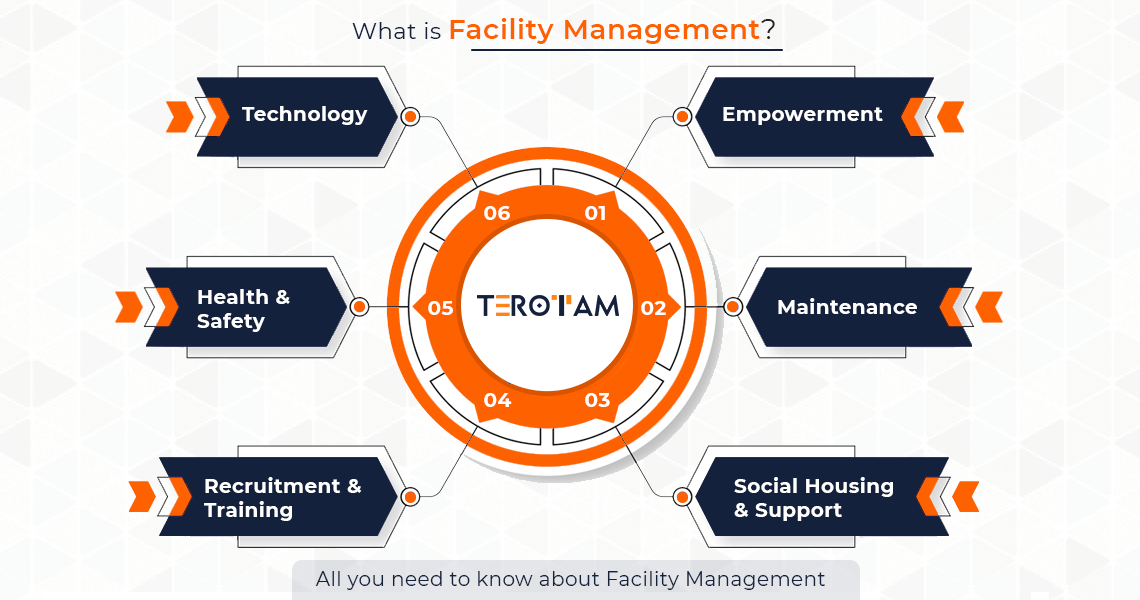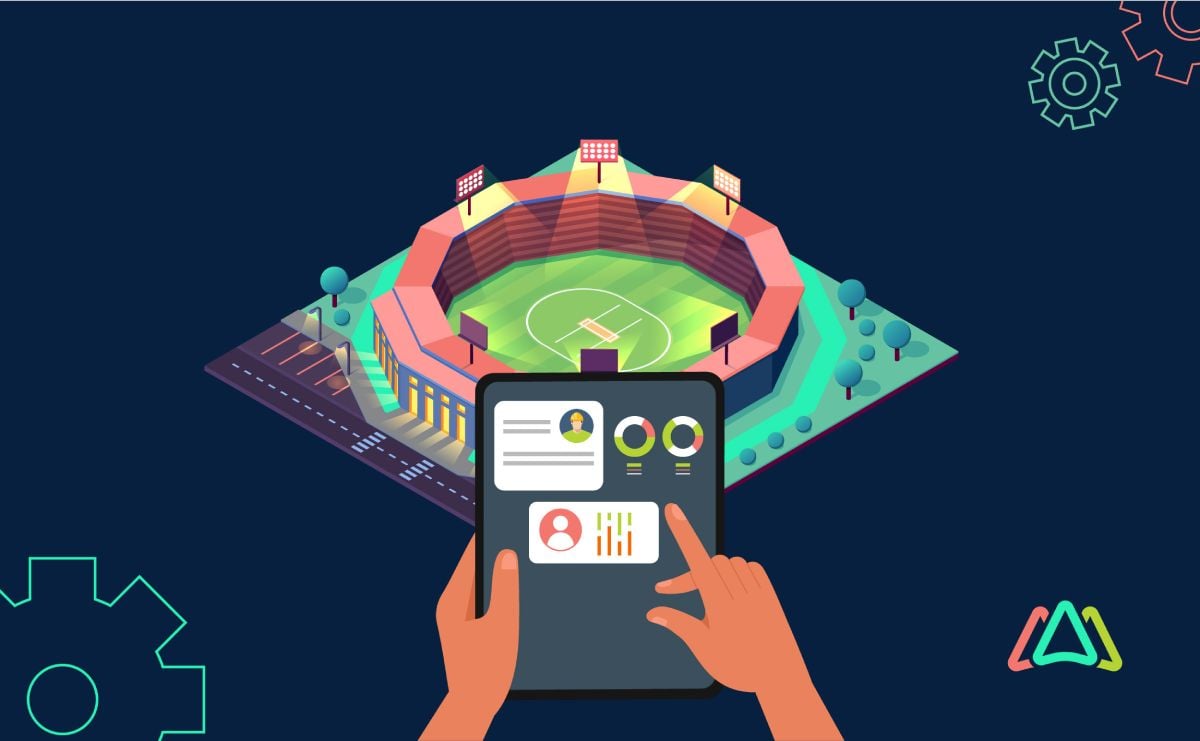Comprehending the Crucial Concepts of Facility Management for Modern Organizations
Comprehending the Crucial Concepts of Facility Management for Modern Organizations
Blog Article
The Essential Overview to Center Monitoring: Approaches for Success
Center administration plays a vital duty in the total success of an organization, functioning as the backbone that sustains productivity, safety and security, and effectiveness. By utilizing tactical approaches such as incorporated technological solutions and fostering cross-departmental cooperation, organizations can significantly improve their functional foundations. The nuances of reliable facility management expand beyond plain logistics and require an extensive understanding of both quantitative and qualitative metrics. As we discover these important techniques, a closer exam reveals just how they can transform not simply facilities, however the very culture within a company itself. What might these transformations resemble in method?
Understanding Facility Monitoring
What constitutes effective facility administration? Efficient center monitoring encompasses the sychronisation of different business features to make sure that developed environments are risk-free, effective, and helpful to performance. Facility Management. It incorporates the principles of architecture, design, and service monitoring to develop a smooth operational circulation within a company
Secret aspects of facility management consist of space preparation, upkeep administration, and compliance with health and safety laws. Area preparation concentrates on optimizing using physical sources to support organizational objectives, while upkeep administration guarantees that facilities are maintained in optimum problem, making best use of life-span and minimizing operational prices. Conformity with regulatory and legal criteria is important, as it safeguards the organization versus possible obligations and enhances its online reputation.
Moreover, effective center monitoring relies upon the calculated use technology, such as Structure Management Solution (BMS) and Computer-Aided Center Monitoring (CAFM) tools. These modern technologies assist in real-time monitoring of structure systems and improve upkeep processes. Inevitably, a detailed approach to center administration not only advertises operational effectiveness yet likewise fosters a favorable atmosphere for site visitors and employees alike, driving general organizational success.
Trick Methods for Optimization
Optimizing facility monitoring requires a critical method that straightens operational exercise with business objectives. To achieve this, the first essential strategy is the application of incorporated technological services. Making use of sophisticated software program systems permits real-time tracking of center procedures, facilitating data-driven decision-making and improving general performance.
Secondly, regular evaluations of center efficiency are necessary. Conducting regular inspections and audits allows center managers to recognize locations that need improvement, making sure that sources are alloted effectively. This positive strategy aids in minimizing downtime and enhancing service shipment.
One more important approach is cultivating collaboration across departments. By encouraging open interaction between groups, center supervisors can better align their approaches with business goals, resulting in enhanced functional synergy. Furthermore, engaging team in training programs advertises a culture of accountability and boosts their ability to contribute to optimization efforts.
Enhancing Security Methods
Strengthening safety protocols is essential for creating a secure atmosphere within centers. An extensive safety protocol not just protects employees and site visitors however additionally improves operational effectiveness. To accomplish this, center supervisors must carry out regular danger analyses to determine potential risks and ensure that proper steps are in place.
Training and education are essential parts of effective safety procedures - Facility Management. Workers must receive recurring training in emergency situation procedures, devices handling, and personal safety measures. Regular drills, such as fire evacuations or lockdown treatments, foster experience and readiness among staff
In addition, clear communication channels should be developed to report safety concerns promptly. This includes developing an obtainable system for employees to articulate potential threats or cases without fear of reprisal. In addition, leveraging technology can improve safety steps; for example, executing monitoring systems and gain access to controls helps monitor center tasks and restrict unapproved entry.
Last but not least, conformity with neighborhood guidelines and sector standards is non-negotiable. Regular audits and testimonials of security procedures guarantee alignment with present laws and finest techniques. By prioritizing these techniques, facility supervisors can cultivate a society of security that shields all stakeholders and eventually contributes to the organization's success.
Improving Office Setting

Ergonomic click here factors to consider are vital to reduce physical strain and discomfort. Facility Management. This entails giving adjustable furnishings, appropriate lighting, and sufficient space for activity. These changes can result in decreased absenteeism and enhanced job satisfaction
Appearances play a vital role fit the workplace ambience. Utilizing shade psychology, all-natural lighting, and greenery can cultivate a inviting and boosting atmosphere. Thoughtfully created spaces can increase imagination and improve total wellness.
Moreover, urging worker engagement with comprehensive decision-making procedures can improve the sense of possession and belonging. Collecting feedback on office enhancements and including staff members in the style process can lead to a much more tailored environment that satisfies their demands.
Lastly, promoting health initiatives, such as health cares and relaxation rooms, can even more contribute to an encouraging office society. By concentrating on these techniques, facility supervisors can successfully enhance the workplace environment, driving both staff member fulfillment and organizational success.
Determining Success in Facilities
Gauging success in facility here management requires a thorough method that evaluates both qualitative and measurable metrics. Measurable metrics generally consist of crucial efficiency signs (KPIs) such as space use rates, energy intake, maintenance expenses, and occupancy levels. These metrics offer a clear photo of functional performance and monetary efficiency, permitting facility supervisors to recognize locations for renovation and criteria against industry standards.
Qualitative metrics, on the other hand, emphasis on user satisfaction and worker engagement. Studies and responses devices can gauge how well the facilities meet the requirements of owners, assisting to examine the general workplace setting. This aspect is important, as a pleased workforce is frequently linked to boosted website productivity and retention rates.
To efficiently determine success, center supervisors should also take into consideration incorporating modern technology, such as constructing monitoring systems and information analytics tools, to collect and analyze appropriate information. Regularly reviewing both sets of metrics permits a much more balanced view of efficiency and educates critical choices. Ultimately, a successful facility management method depends upon a dedication to continuous improvement, making certain that both functional performances and customer fulfillment are prioritized.
Conclusion

Facility administration plays a critical role in the total success of an organization, serving as the foundation that supports productivity, effectiveness, and safety and security.Key aspects of center monitoring include space planning, upkeep administration, and conformity with health and security guidelines.In addition, effective facility administration depends on the calculated usage of technology, such as Building Management Solution (BMS) and Computer-Aided Facility Administration (CAFM) devices. Eventually, a comprehensive method to facility administration not only promotes operational effectiveness however likewise promotes a favorable atmosphere for workers and site visitors alike, driving general organizational success.
Eventually, a successful facility management strategy hinges on a dedication to continual renovation, making certain that both functional performances and customer fulfillment are focused on.
Report this page